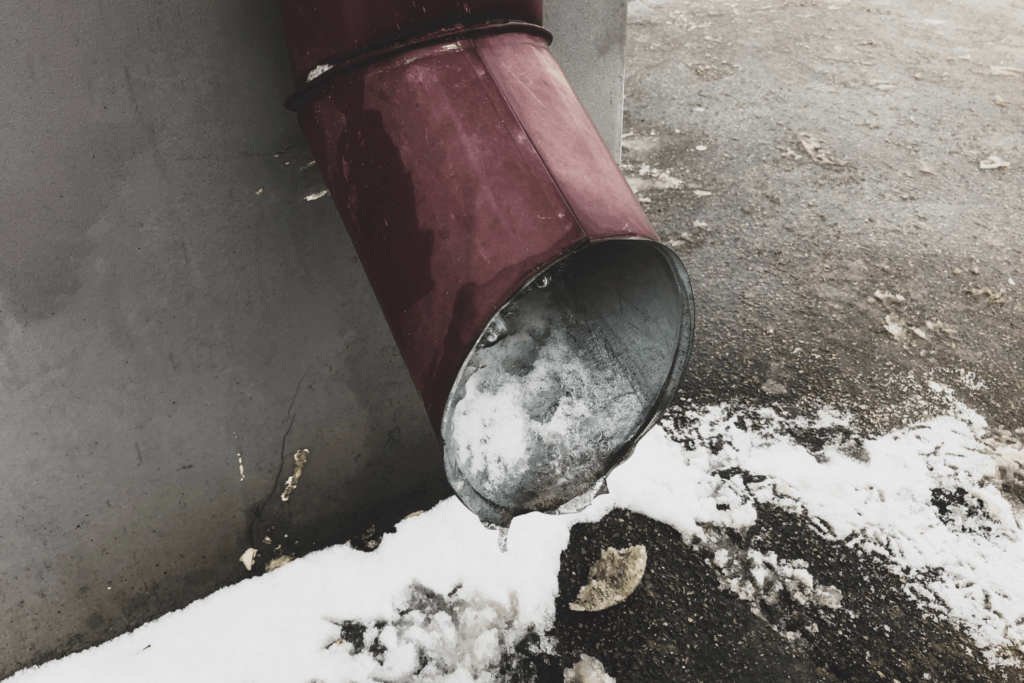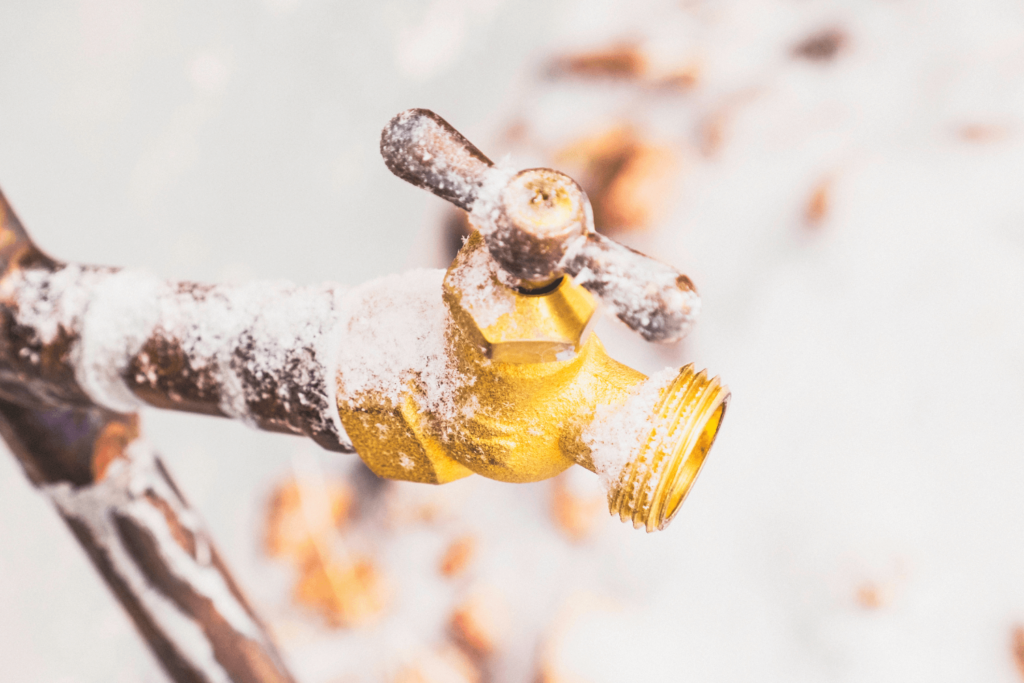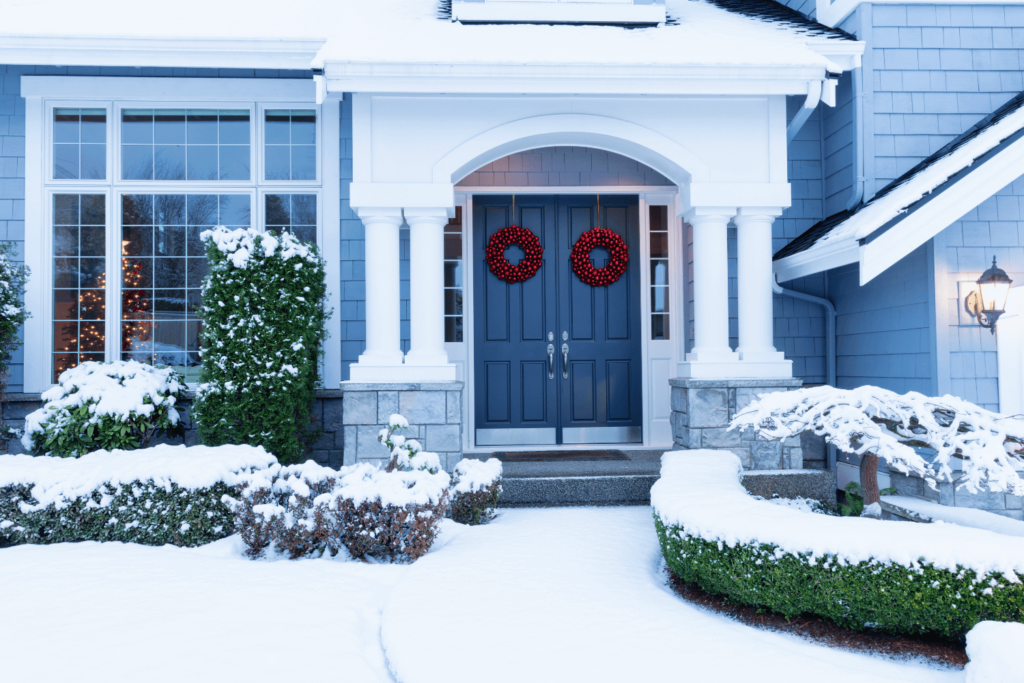Temperatures are starting to drop, so it’s time to winterize your basement and protect your foundation. A cold basement can be dangerous for the structure of your foundation and any personal property inside it, whether you use it for storage or additional living space. While heating a basement can help it feel more comfortable and offers a modicum of protection, basement winterization goes further to keep it safe and dry all winter long. As one of the most trusted foundation repair contractors in the Greater Pittsburgh area, here are our top tips to get ready for the coldest months.
- Clean Your Gutters and Downspouts

The first step to winterizing a basement starts on your roof. Gutters collect rainwater and snow melt, channeling it to downspouts that guide it to the natural drainage around your home. When leaves, twigs, or trash build up, they can cause clogs that prevent the free flow of the water, and in winter, that leads to freezing. Frozen gutters create an ice dam that overflows, creating long, heavy icicles that deposit water directly next to your foundation’s walls. Over time, this can lead to flooding, foundation issues, gutter, and roof damage.
Your roof, gutters, and downspouts should be inspected annually. Make sure the entire gutter system is clear of debris, and install gutter shields–perforated plates that allow water and snow melt to enter the system while keeping out debris. Splash guards at the bottom of the downspouts should also be in good repair to help direct the runoff away from the home or install downspout extensions. These long tubes move the water further away from your basement walls for additional protection of your winterized basement.
- Keep Basement Vents and Windows Closed
Vents and Windows that are left open draw cold air into your basement. This leads to a dangerously cold basement that puts any pipes in the floor or walls of your home at risk. In addition, this cold air is drawn upwards into the living spaces through the floorboards and basement entry points. You can see costs to heat the basement and home skyrocket with even the smallest vent or window gap left open.
Keep your vents and windows closed throughout the winter months. Repair any cracked or broken glass, and if they’re equipped with outside or inside shutters, close them. You should also ensure there’s no missing caulking or window sealant that are allowing air to whistle in through small gaps.
- Add Insulation to Keep Heat In and Cold Out
Insulation helps ensure that your cold basement doesn’t get so cold as to cause damage. Window, rim joist, and door insulation all work to provide a barrier between outside temperatures and the inside of the basement. If you decide to heat your basement–either as a precaution, you use it as a utility room, or it serves as an extension of your living spaces–this insulation also helps keep the heat you’re paying for from escaping. Insulation panels can be cut to size to create a snug fit and secured in place for sealed protection.
One must-have insulation type is pipe insulation. Pipes are particularly susceptible to cold temperatures and freezing damage. As water freezes, it expands. The force of this expansion doesn’t just stop up the pipe but can also be strong enough to crack and burst metal. Pipe insulation provides an additional barrier from the cold to keep the water in your pipes flowing. Consider installing an electric pipe heater for extreme cold temperatures or if a pipe is more vulnerable because of its placement.
- Check and Clean Your Sump Pump and Outlet Pipes
Installed at the lowest point of your basement, the sump collects moisture that accumulates in your foundation’s walls, and then a powerful electric sump pump moves the water away from your home through outlet pipes that feed natural drainage in the land. If the drain or pipes become clogged with sticks, dirt, or trash, water can back up into the home or overwork your sump pump. In addition, you may need to set your pump to run periodically to help keep the outlet pipes clear of freezing water during the winter.
When you winterize your basement, use a hose to clean out your outlet pipes and ensure they have an unobstructed flow. Make sure the drain is clear and verify the sump pump is in good repair. If it has an automatic start/stop feature, ensure this is working appropriately, and verify the backup power source (if equipped) is ready to go.
- Disconnect Outside Hoses and Winterize Spigots

Although they may not be in your basement, outdoor hoses and spigots are connected to the water pipes overhead or in your walls. Frozen hoses can leach the heat out of the spigots and pipes they’re connected to, increasing their risks. If not managed, they can help create a cold basement or even lead to frozen, busted pipes.
As soon as you’re done using the hoses for preparation to winterize your basement, it’s time to store them until next year and get those spigots covered. Spigot covers often include a layer of foam insulation inside a plastic shell that secures to the body of the spigot with an adjustable tether. This keeps in the heat and protects them from the cold, wind, and ice that are most likely to damage them.
- Fix and Seal Foundation Gaps and Cracks
Finally, take the time to patch any foundation cracks you find in your basement floor or walls. As the water in the soil outside your foundation walls freezes, it also expands, increasing the pressure pressing against your basement. This can force still-liquid water through the small gaps or turn smaller cracks into larger ones. Cracks less than ⅛th of an inch wide or deep are easily repaired using waterproof concrete patch compounds found at most home improvement stores. Larger cracks or bowing walls need professional attention immediately.
You should also look for gaps that can be sealed, often found at joints in your basement walls, where the basement meets your home’s support structure, or around pipes leading to the outside. Small gaps can be filled with indoor/outdoor caulking, while larger spaces may require the use of an expansion foam that’s sprayed into the void, where it expands before hardening and curing. Eliminating cold-air infiltration as you winterize your basement will go a long way toward preventing a dangerously cold basement and help control heating costs.
Pittsburgh’s Basement Waterproofing Experts
There’s no cost or obligation when you request a free basement inspection from our foundation specialists. They’ll take a look at your property, identify and evaluate any damage, and tailor a written estimate that gives you options to mitigate your foundation’s risk factors. Whether you need to winterize your basement, repair your foundation, or install the waterproofing systems that will keep it safe and dry, our work speaks for itself. Schedule a free visit from A.M. Wall Anchor & Waterproofing today.

